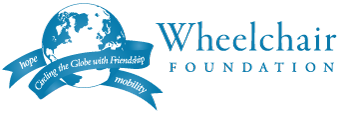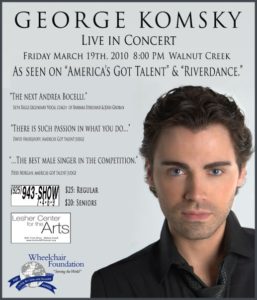Kiev, the present capital of the Ukraine, received the title of Hero City in 1965, in recognition of the stalwart courage of thousands of volunteer citizens and the death-defying bravery of the resistance movement. The city of Kiev, on the western hilly shores of the Dniepner River, bravely resisted the Nazi blitzkrieg, defending the city for as long as they could hold out against the Nazi invasion in the summer of 1941. A mass retreat to safer regions, including Siberia, saved many from sure death.
The Battle of Kiev was a large combat encirclement in the German offensive of the then-Soviet Union, where the Red Army battled to hold their position. The Nazis captured 600,000 Soviet troops, deported them to labor camps and rapidly moved with deadly surgical precision to terrorize the Ukraine. General F. Eberhardt, under the mobile killing squad—the Eisatzgruppen—conducted the largest two-day massacre of Ukrainian Jews on 29-30 September 1941. It was one of the worst singular Nazi wartime-orchestrated atrocities of the Holocaust against humanity. Nazi squads lured the Jews of Kiev, with the promise of resettlement, to the Bykivnia Forest and to a cemetery on Dorogozhitskaya Street, near the Babi Yar Ravine where a staggering 33,771 people, in a two-day frenzy of killing, were machine gunned into mass graves in the shallow gorge.
Four and one half million troops of the Axis powers invaded the USSR along the 1,800-mile front—the largest military offensive in history—code-named Operation Barbarossa. They advanced in military vehicles and on 750,000 horses; the sole motivation being territorial aggression and the quest for ‘lebensraum,’ the acquisition of living space, habitat colonization and raw materials. Additionally, the Nazi regime had contempt for Latins and ethnic Slavs (untermenschen) and the pan-Slavic ideals. To create ‘New Lands for Germany’ they planned to enslave the captured Slavic “inferior and decaying race who choked healthy budding elements” thus condemning the peoples of the USSR to concentration camps or outright extermination that included Jews and 270,000 Gypsies.
Kievites prepared for a bitter battle, and upon evacuation of many citizens, the Red Army planted a network of 10,000 radio-controlled mines. After the retreat, they detonated the mines killing thousands of occupying Nazis. The city blazed for five days—the operation was “the most sophisticated booby trap in history.” The explosions destroyed much of the city, but a lone building stood in the rubble on the Khreschatyk as a defiant sentinel to Kiev’s courage.
It was not the first time that Kiev stood in defiance. In the late 1930s, the city saw mass executions of party activists and intellectuals. Unjustly court-martialed, they were shot and buried in mass graves. In 1240, when the Grand Duchy of Lithuania in Muscovite Russia had control of Kiev, the Mongols invaded and fire-branded the entire city.
The city of Kiev and the Ukraine were no strangers to heartache and oppression – it was what made their souls soar higher – for better lives and for peace.
Heroism has Many Faces, Many Facets
From the 1970s to 1990 – the year the USSR disintegrated – the government opened brief pockets windows of opportunity, whereby Jews could emigrate to Israel and the United States. Some candidates for exit succeeded. Many failed. Applications to exit the Soviet Union during the two decades came with brutally cruel consequences–the loss of jobs forever. The aspirant emigrants were branded as traitors of the Soviet People, during the Russification of the Ukraine, and became virtually unemployable and still, the would-be ‘expatriates’ took courageous chances to achieve freedom from oppression and its insidious persecutions—to start a new life.
It is right here that I will relate a most fascinating and heartwarming backstory of courage, determination and a family’s patient endurance for survival of the spirit. I have laid the groundwork of a partial, but poignant, history of the City of Kiev and the ferociously proud fortitude of Ukrainians. There are many such stories of courage, but this is one such story that I know.
In the 1980s, Irene and Henry, two Ukrainian teenagers, whose love for one another eventually bound their two families by the union of their marriage, came to California. After nearly ten years, with constant applications to immigrate to America, and with infinite patience and great tenacity of purpose, the day finally arrived when the papers came through in 1988 with permission to leave the Ukraine for the United States.
The Gift of a Golden Voice
George Komsky
By the time, the young Komsky family finally immigrated to California; they had a three-year old child George who was born in Kiev. The two families found the support of one another and settled in the East Bay. It was just a matter of time before young George, showed interest in music. He learned to play piano and saxophone at eight; parroted the great Pavarotti by singing opera at eleven and began formal voice training as a teenager, with the cantor at Temple Isaiah in Lafayette.
When George Komsky started high school at Monte Vista in Alamo, he joined the Speech and Debate Team taking first place in the state competition in 2003 and fourth place in the Nationals. As a member of Monte Vista High School’s Chamber Choir in 2001, he performed Verdi’s Requiem at St. Paul’s Basilica in Rome. He won the Edward Barlow Scholarship for singing at the National Association of Teachers’ Bay Area Singing Competition, and gave the graduation commencement speech in 2003.
George Komsky’s golden light tenor voice won him a coveted vocal scholarship to UCLA and after graduation; he toured with the prestigious Irish sensational production of Riverdance as lead soloist, sang with the Twelve Irish Tenors, and was a semi-finalist on America’s Got Talent in 2006. Judge Piers Morgan added; “he was the best male-vocalist in the show,” Seth Riggs, the legendary vocal coach of Barbra Streisand, Natalie Cole, Michael Jackson and Josh Groban predicted of Komsky, his protégé and star pupil, “George will be the next Andrea Bocelli.”
The twenty-four year old tenor, George Komsky, born in Kiev in 1985, schooled in Danville and Los Angeles, is truly blessed with a beautiful golden voice and who may very well be the next Andrea Bocelli. If the dedication to his music and the devotion, courage and tenacity he inherits from his parents and grandparents is a paradigm by which he structures and pursues his career, then he will be as successful as a Bocelli–he too will reach the stars.
George Komsky will debut his first solo performance with a special dedication to his intrepid and valiant family – and a celebration for those who survived and those who did not – and to the memory of his late grandfather David.
Live in Concert will introduce George Komsky to his hometown and Bay Area audience on March 19 at the Lesher Centre. The concert will comprise opera, pop-opera, Neapolitan songs, and other musical surprises.
In the tradition of his family, who have been generous of spirit and caring for others less fortunate, George Komsky will donate a portion of the ticket sales to Danville’s own esteemed charity The Wheelchair Foundation (www.wheelchairfoundation.org) who sends wheelchairs to people in need of mobility around the world. The Foundation, under the altruistic guidance of Ken Behring and the Behring family of Blackhawk, has donated over 800,000 wheelchairs to people in 150 countries.
George Komsky: Live in Concert, March 19, 8 p.m. at the Lesher Centre for the Arts
Purchase tickets: $25 regular, $15 seniors and students at the Lesher Centre, Walnut Creek.
Call 925.943.SHOW or www.lesherartscenter.org. Information – contact Anita Venezia in**@**********ay.com
SOURCE: ALIVE East Bay

 He will perform songs he describes as “opera, pop opera, Neapolitan classics and musical surprises.”
He will perform songs he describes as “opera, pop opera, Neapolitan classics and musical surprises.”